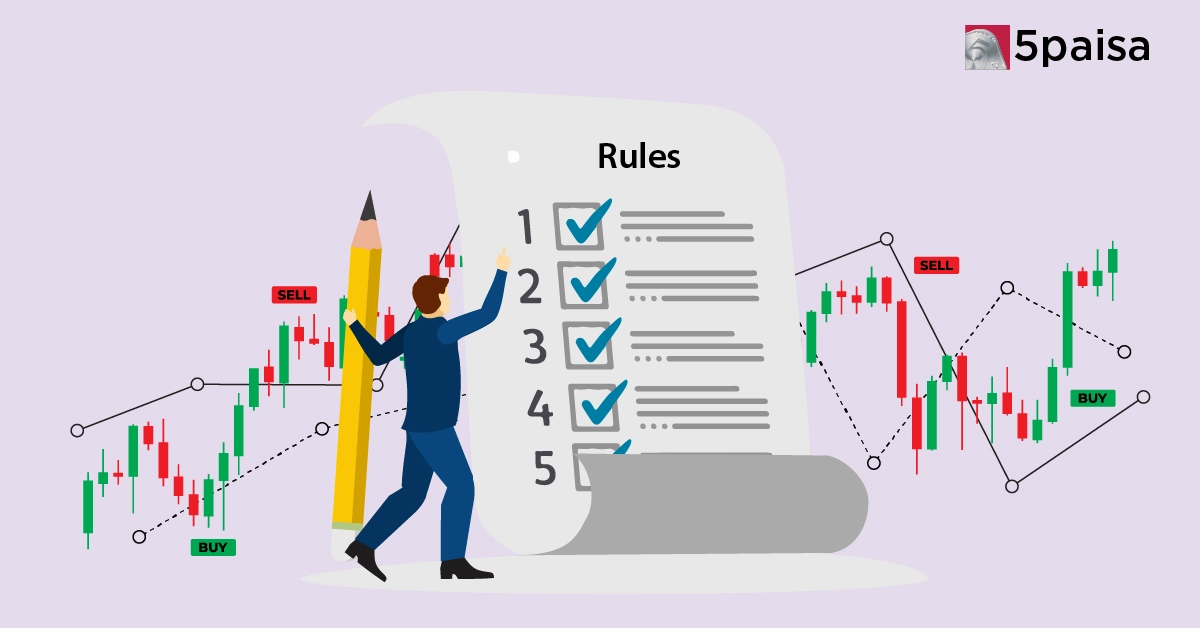Is It Mandatory to Show F&O Losses in ITR?
What are Basis Points (BPS)?

Last Updated: 1st August 2025 - 12:23 pm
Imagine you're watching a cricket match where the difference between victory and defeat comes down to a fraction of a run. In finance, basis points play a similar role - they're the tiny measurements that can have a massive impact. Just as every run counts in cricket, every basis point matters in finance.
What Are Basis Points (BPS)?
Basis points, often abbreviated as BPS, are the microscope of the financial world. They allow us to zoom in on incredibly small percentage changes that can have significant impacts. One basis point is equal to one-hundredth of a per cent, or 0.01%. It's like slicing a cake into 10,000 equal pieces—each slice represents one basis point.
Now, you might be wondering, "Why on earth do we need to be this precise?" When dealing with huge sums of money, even the smallest change can mean thousands or even millions of rupees. That's why the bigwigs in finance - Financial experts, bankers, and investors use basis points to precisely discuss changes in interest rates, bond yields, and other financial percentages. Even these tiny fractions can translate into substantial amounts when dealing with large sums of money.
Importance of Basis Points
Here's where things get interesting. Basis points are like the universal language of finance. They clear up a lot of confusion when we're just throwing around percentages.
Picture this: Your friend tells you the interest rate on their loan "increased by 1%". Now, you're scratching your head. Did it go up by one percentage point (from 5% to 6%)? Or did it just grow by 1% of what it was before (like from 5% to 5.05%)? It's confusing, right? This is where basis points swoop in to save the day.
If your friend had said, "My interest rate went up by 100 basis points," you'd know exactly what they meant - it increased by one full percentage point. No confusion, no fuss.
The importance of basis points lies in their ability to provide clarity and precision in financial communications. Here's why they matter:
1. Clarity: They eliminate ambiguity in percentage changes. If someone says "an increase of 50 basis points," there's no confusion about whether they mean 0.5% or 50%.
2. Precision: Tiny changes in large financial transactions can mean significant sums of money. Basis points allow for exact measurements of these small but crucial differences.
3. Standardisation: Basis points provide a universal language in finance, ensuring everyone is on the same page when discussing percentage changes.
4. Ease of comparison: When comparing different financial products or investments, basis points make it simpler to spot even minor differences.
Applications of Basis Points
Basis points are used widely across the financial sector. Here are some common applications:
1. Interest rates: Banks use BPS to adjust rates on loans and savings accounts.
2. Bond markets: Investors compare bond yields using basis points.
3. Stock markets: Analysts might describe daily market movements in BPS.
4. Investment fees: Many fund management fees are quoted in basis points.
5. Central bank decisions: The Reserve Bank of India often changes interest rates by a certain number of basis points.
Steps to Calculate BPS (Basis Points)
Calculating basis points is straightforward in principle but becomes crucial in precise financial modelling, especially when navigating layered instruments such as debt securities, structured credit, and benchmark rate-linked instruments like MCLR or T-bills in India.
Step-by-step approach:
Identify the Percentage Change:
Start with two values—say, an interest rate moving from 6.00% to 6.25%.
Difference = 6.25% - 6.00% = 0.25%
Convert Percentage to Basis Points:
Multiply the decimal difference by 100 to get percentage points (e.g., 0.25%).
Then, multiply the result by 100 again to convert to basis points.
So, 0.25% = 25 basis points.
Alternate BPS to % Conversion:
To convert basis points to a percentage, divide the BPS value by 100.
For example, 150 BPS = 1.50%
In the Indian context, this granular measure becomes vital for interpreting RBI rate cuts, repo rate revisions, or fixed-income benchmark adjustments, where exact changes in basis points impact macroeconomic outlooks and market sentiment.
Formula to Calculate Basis Point
Converting between basis points and percentages is straightforward:
To change basis points to a percentage, Divide the number of basis points by 100. Example: 50 basis points = 50 ÷ 100 = 0.50%
To change a percentage to basis points, Multiply the percentage by 100. Example: 0.75% = 0.75 × 100 = 75 basis points.
Examples of BPS in the Indian Market
To truly appreciate the relevance of basis points in India, it helps to examine real-world use cases:
- RBI Policy Rate Changes: When the Reserve Bank of India adjusts the repo rate, it typically announces changes in basis points. A cut from 6.50% to 6.25% is reported as a 25 BPS cut, signalling an easing monetary stance.
- Mutual Fund TER Adjustments: SEBI regulations on Total Expense Ratio (TER) cap changes in basis points. If a fund’s TER moves from 1.55% to 1.60%, it’s a 5 BPS hike, which significantly impacts net returns in debt-heavy schemes.
- Bond Yields & Credit Spreads: A G-sec yield widening from 6.80% to 7.00% is a 20 BPS increase, which may reflect inflationary trends or rising credit risk, pivotal for institutional investors and corporate treasury desks.
- Home Loan Interest Rates: Banks often communicate MCLR or RLLR adjustments in basis points. A 50 BPS hike might make EMI burdens noticeably heavier for Indian borrowers, especially in a high-debt environment.
These examples illustrate that basis points are more than mere arithmetic tools—they directly affect investor sentiment, consumer finances, and market trajectories.
Advantages of BPS
Using basis points provides several key benefits in India's diverse and layered financial system:
Enhanced Precision
Expressing 0.25% as 25 BPS eliminates ambiguity in critical decisions, especially for derivatives and bond pricing models.
Improved Comparability
Allows quick benchmarking of yields, interest rates, or fund fees across different instruments or institutions.
Better Communication in Volatile Markets
Especially during monetary policy reviews or rate-sensitive periods, BPS language helps prevent misinterpretation of minute but material changes.
Regulatory Clarity
SEBI and RBI guidelines frequently cite BPS to set limits or thresholds, ensuring standardisation across market participants.
Efficient Portfolio Management
Asset managers and analysts can model sensitivity (e.g., DV01, PVBP) in terms of BPS for risk-adjusted returns.
Financial Engineering Applications
In structured products like REITs or MBS, every basis point may represent substantial rupee shifts, making it vital in cash flow modelling.
International Consistency
With India increasingly integrated into global financial systems, using BPS aligns domestic financial communication with international norms.
How Are Basis Points Calculated? (With Example)
Let's walk through a real-world example to see how basis points work in practice:
Imagine you have a fixed deposit account with an interest rate of 6.00%. The bank decides to increase the rate by 25 basis points. Here's how to calculate your new rate:
● Convert 25 basis points to a percentage: 25 ÷ 100 = 0.25%
● Add this to your original rate: 6.00% + 0.25% = 6.25%
Your new interest rate is 6.25%. The bank communicated this small but meaningful change precisely using basis points.
How to Convert Basis Points to Percentage?
Converting basis points to percentages is simple once you get the hang of it. Here's a quick guide:
● Take the number of basis points.
● Divide it by 100.
● That's your percentage!
For example: 100 basis points = 1.00% 50 basis points = 0.50% 10 basis points = 0.10% 1 basis point = 0.01%
A handy trick: Moving the decimal point two places to the left quickly converts basis points to percentages in your head.
How Are Basis Points (BPS) Used in Pricing Financial Instruments?
Basis points play a crucial role in pricing various financial products:
● Bonds: The bond yield is often discussed regarding basis points above a benchmark rate. For instance, a corporate bond might be priced at "150 basis points above the 10-year government bond."
● Loans: Banks might adjust mortgage rates by certain basis points based on market conditions. For example, a bank could increase its home loan rate by 15 basis points in response to a central bank rate hike.
● Investment funds: Management fees for mutual funds or ETFs are typically quoted as basis points for the total assets. A fund with a "50 basis point fee" charges 0.50% of the assets under management annually.
● Derivatives: Option prices and futures contracts may be quoted or adjusted using basis points, allowing for precise calculations in these complex financial instruments.
Conclusion
Basis points might seem small, but they're a big deal in finance. They help everyone speak the same language regarding tiny but important rate changes and yields. Whether you're saving, investing, or borrowing, understanding basis points can help you make sense of the financial world around you.
By providing clarity, precision, and standardisation, basis points ensure that even the smallest financial changes are communicated accurately and understood clearly.
Frequently Asked Questions
How Do Basis Points (BPS) Affect Bond Yields?
How Are Basis Points (BPS) Used in Interest Rate Changes?
What Are Some Common Abbreviations or Symbols Used for Basis Points (BPS)?
Where are basis points commonly used?
How do basis points affect investments?
Is BPS used in stock markets too?
- Flat ₹20 Brokerage
- Next-gen Trading
- Advanced Charting
- Actionable Ideas
Trending on 5paisa
Indian Stock Market Related Articles
Disclaimer: Investment in securities market are subject to market risks, read all the related documents carefully before investing. For detailed disclaimer please Click here.

 5paisa Capital Ltd
5paisa Capital Ltd
 5paisa Capital Ltd
5paisa Capital Ltd



